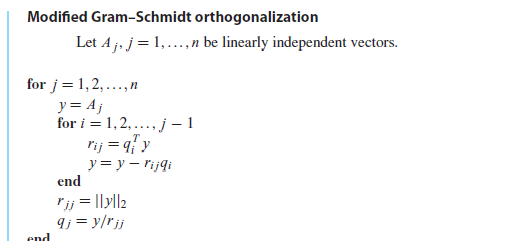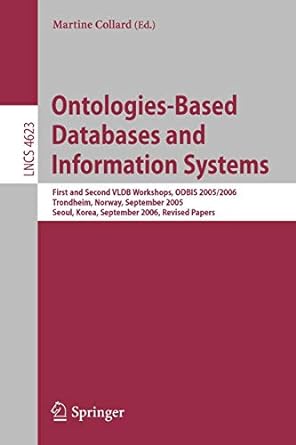Question
WRITE THE CODE IN C++ Write a code that implements both the classical and the modified GramSchmidt orthogonalization to find the reduced QR factorization of
WRITE THE CODE IN C++
Write a code that implements both the classical and the modified GramSchmidt orthogonalization to find the reduced QR factorization of a given matrix A. Your code should detect if the columns are linearly dependent and abort with an appropriate message.
To detect linear dependence of the column vectors, it's sufficient to check for zero before normalizing vectors vj in the Classical Gramm-Schmidt (CGS), vi in the Modified Gramm-Schmidt (MGS) and vk in the Householder (H) methods, respectively. At least for CGS and MGS it should be clear that zero length of these vectors means that they are in the span of all previous q vectors. Recall that for each j=1:n, span{a1,..,aj} = span{q1,...,qj}. So in short, in CGS you have to stop the routine if rjj=0; likewise in MGS if rii=0; in H if norm(vk)=0.


Step by Step Solution
There are 3 Steps involved in it
Step: 1

Get Instant Access to Expert-Tailored Solutions
See step-by-step solutions with expert insights and AI powered tools for academic success
Step: 2

Step: 3

Ace Your Homework with AI
Get the answers you need in no time with our AI-driven, step-by-step assistance
Get Started


